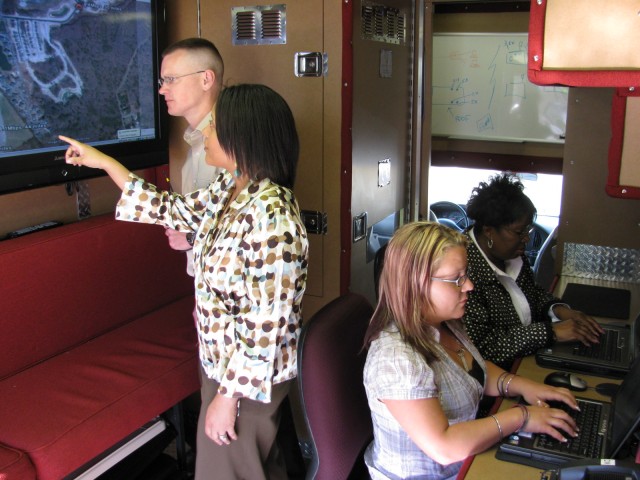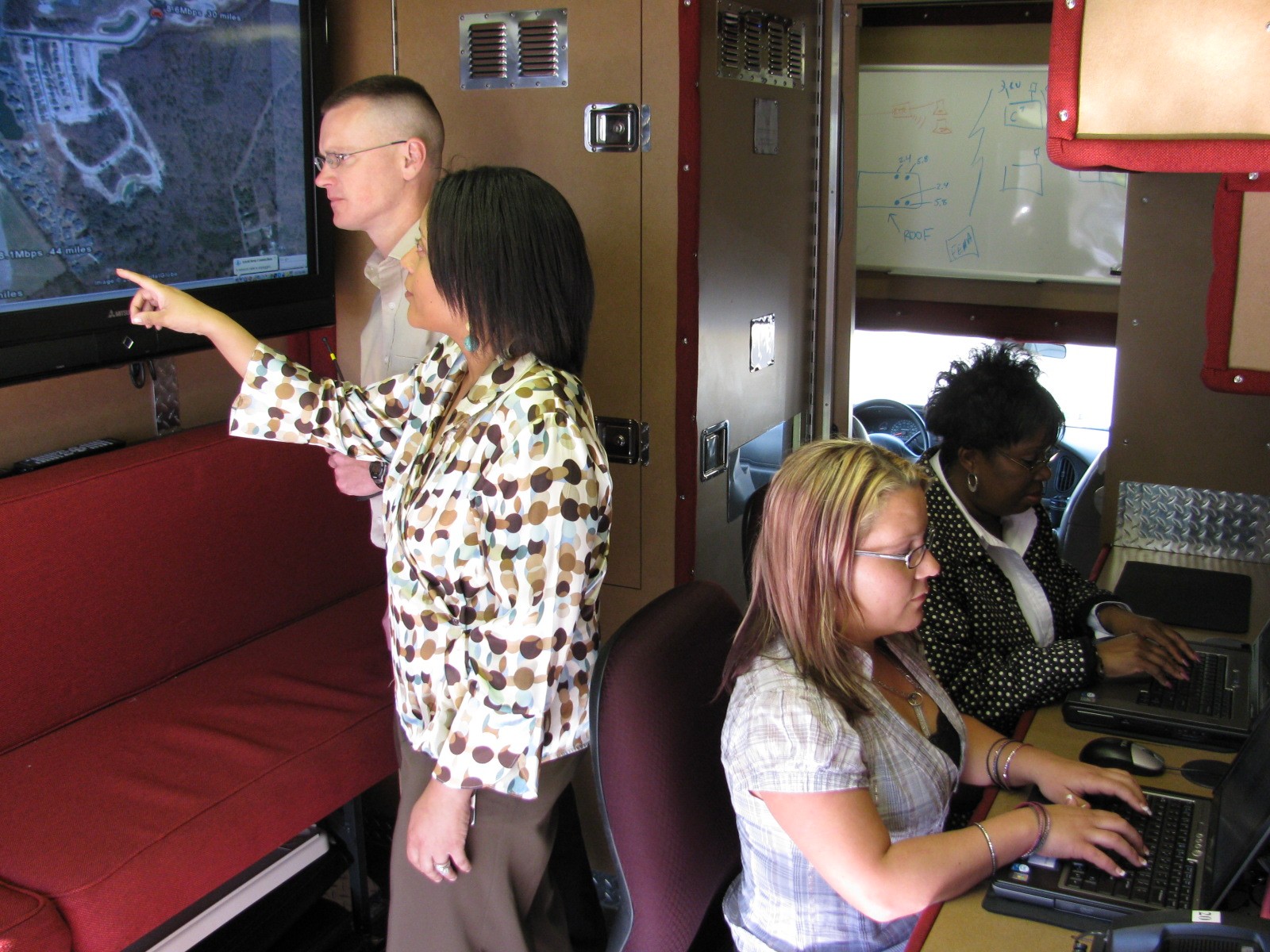DETROIT ARSENAL, Mich. - Technology enables the Emergency Operation Center to be fully operational and self-sufficient mobile units which can be activated in the event of a natural or man-made disaster.
The Detroit Arsenal maintains two emergency operations vehicles-one serves to deal with Chemical, Biological, Radiological, Nuclear and high-yield Explosives and tows a bio-watch trailer; the other functions as a mobile Incident Command Center.
"It is essential for us to have state-of-the-art capabilities to protect our workforce from CBRNE weapons of destruction," said Ralph Sanders, Directorate of Plans, Training, Mobilization and Security director. "Mobile EOC vehicles are vital tools which can enable leadership to make crucial decisions at the scene."
Partnering with the Tank-Automotive, Research, Development and Engineering Center, a team of skilled professionals designed the vehicles to accommodate closed-circuit cameras, computers, monitors, a refrigerator, flat-screen televisions, installation access maps, radios, phones, furniture and accessories, emergency supplies, cooling fans and internal lighting-just to name a few! Large antennas enable internet access and facilitate communication between the CBRNE and EOC vehicles.
"Before we work on the vehicles, we need to have a clear understanding of the mission and operational requirements so that we can build accordingly," said Dave Stormer, lead technician, TARDEC Electronic Innovation Team. "The configuration of the trailer is very detailed. It's customized down to the smallest fitting."
Because the units are mobile, all internal equipment and supplies need to be securely anchored. Adequate ventilation is also a concern due to the volatile nature of the materials that the CRBNE vehicle may transport. Power can be obtained by either plugging units into external sources or by using the attached generators.
"The mobile EOC and the CBRNE vehicles elevate our capabilities to the next level," said Pete Watson, acting chief of plans. "These vehicles will prove invaluable during a time of crisis as they provide and deliver protection, communication, and recovery assets to where they are needed most. As DPTMS continues to develop these vehicles and meet the demands of our current threats, we remain focused on the safety and protection of our primary asset, the people."


Social Sharing